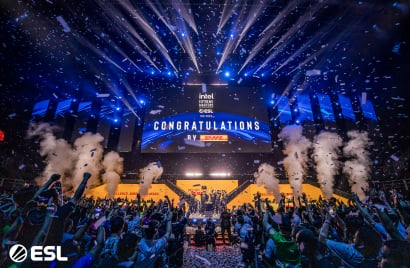
How can brands use music to overcome generational tensions?
Joanna Barnett, Strategy Director at Truant, on the power of music to bring people closer together and broaden a brand’s appeal.

Rodrigo Samwell urges brands to tap into Esports with an audience of 451M people tuning in.

Have you ever stepped into an esports arena? Felt the energy of the crowd, heard thousands of people chanting a player’s name, and watched the way a team plays as one mind.
If you’re a brand marketer, you should. Because this is where the next generation are hanging out. And it’s where your brand should be, too.
Esports is booming. 451M people are tuned into the esports ecosystem around the world, and the average age of its audience is around 29-years-old according to Newzoo data.
We all know that the most important generation for the future of your company is the next one coming: Gen Z. And what do they love—like really love? Esports. If you engage with them, and create both with and for them, you can unleash potential for your brand by building both cultural relevance and resonance.
So what happens when a brand wants to play in this arena? When you’ve decided esports is your next marketing frontier, how do you ensure your brand is giving something back to the community, instead of showing up uninvited?
Esports offers a physical, offline interaction between brand and fan which ultimately builds the kind of loyalty not easily replicated through any other industry.
Rodrigo Samwell, Chief Commercial Officer, ESL FACEIT Group
This next generation esports audience notices everything. They’re paying close attention and they’re not afraid to call both brands and businesses out when they feel their presence is either disingenuous, self-serving or just plain off.
This isn’t to say you need to wait for an invitation to play. Rather become part of the community you’re wanting to speak to. Work with them instead of for them. Develop content and brand ideas that are aligned with what your audience actually wants, instead of what will make for a great PR headline for you.
If your brand is entering this space, you need to be doing something authentic, and you need to have a long-term strategy to execute that authenticity.
In order to develop a beneficial esports and gaming strategy, brands shouldn’t look to use different tournaments as test and learn cases. They should instead take a long term view, turning it into a core element of an overarching marketing strategy.
The esports and gaming audiences aren’t used to being bombarded with branding as perhaps a traditional sports fan would be with the jerseys, billboards and ad breaks. Brands won’t be successful in this space if they apply their logo on a few tournament posters. Long-term investment is how you build lasting brand affinity and so, most importantly, loyalty from this next generation audience.
For the esports and gaming audience, a brand needs to be able to be seen as endemic, not as taking a piece of the pie for its own end.
So, once you’ve established where your brand might fit into the esports ecosystem, develop the story you want to tell. This is where data comes into play. Not simply as a few standalone stats but instead as the start of your narrative.
Interpret the data at your fingertips to turn it into the brand story you’re writing. Build this data into a clear storytelling strategy, working with expert partners to help you do so.
Perhaps a prime example of this is DHL, whose investment in the esports landscape over the last six years has seen them turn into a brand that’s loved by the community. DHL is now a company loved by gamers; all ESL fans find DHL likeable as a sponsor. The brand has taken itself from logistics to tech, becoming a vital part, and enabler of the esports show for both players and attendees all over the world.
This next generation audience is wearing DHL merch, they’re holding up branded signs and engaging with its robot mascot EffiBOT. Perhaps most incredibly, over the past few years, it’s become pretty common to hear fans chant the brand’s name at ESL One tournaments. A totally organic moment which would send shivers down the spine of even the toughest of marketing leaders.
Because the reality is that, once an esports fan, always an esports fan. So if you can capture attention, and more essentially, loyalty, when your audience is the next one coming through, well, then you have them for life.
We see repeated evidence that the esports and gaming community stays involved in the industry for their whole life. They’ll shift roles over time, from gamer to viewer to veteran but once they’re in, they’re not going anywhere. This offers brands a rare chance to develop lifelong advocacy from an audience who, if you’re lucky, might just chant your brand’s name at the next tournament.
Because esports offers a physical, offline interaction between brand and fan which ultimately builds the kind of loyalty not easily replicated through any other industry.
Understand the community you’re stepping into; tell a story that rings true to both your brand and the audience you’re trying to reach; invest long term not short term, and you’ll have a next generation fan base that will love you for life.


As a C-level executive with more two-and-a-half decades of experience in Telco, Tech, Entertainment and Gaming industries, Rodrigo Samwell has held leadership roles in multiple business areas, including commercial development, marketing strategy and execution, brand development, general management, digital transformation and turnaround programs across various countries/regions. He is passionate about people development and loves to help both organizations and people pursue their long-term visions and missions.
Looks like you need to create a Creativebrief account to perform this action.
Create account Sign inLooks like you need to create a Creativebrief account to perform this action.
Create account Sign in